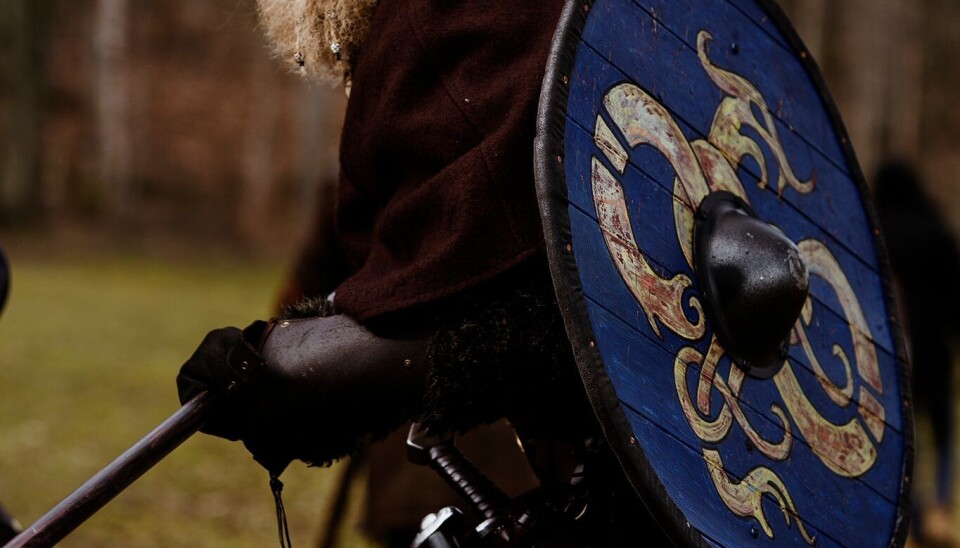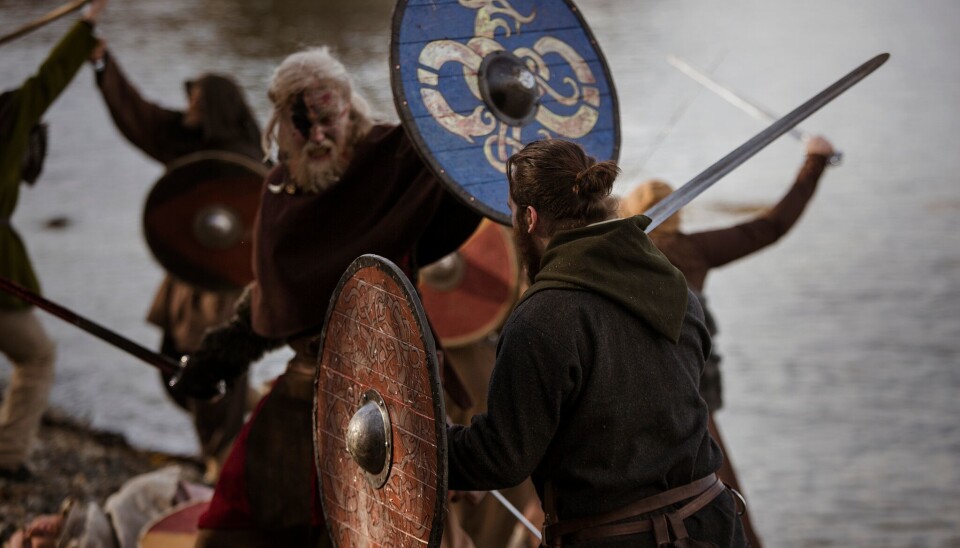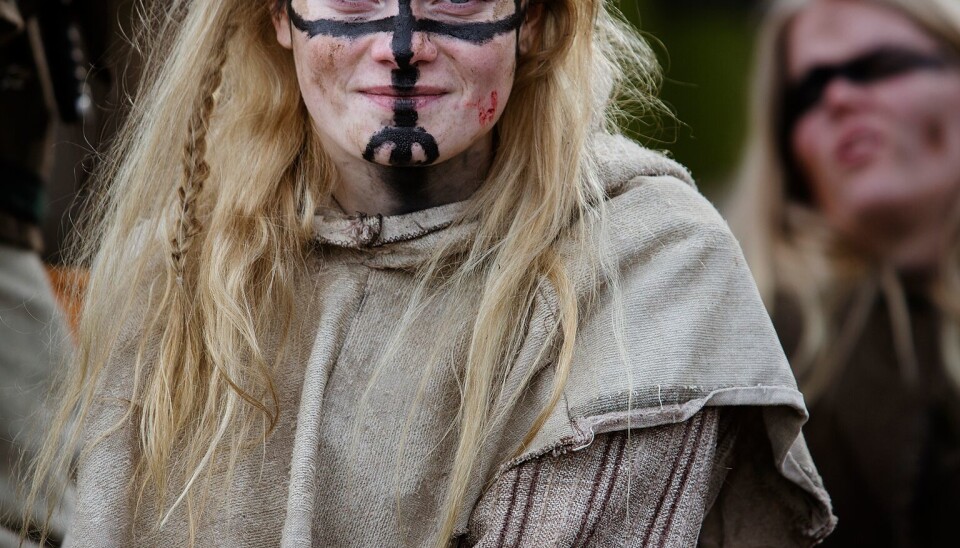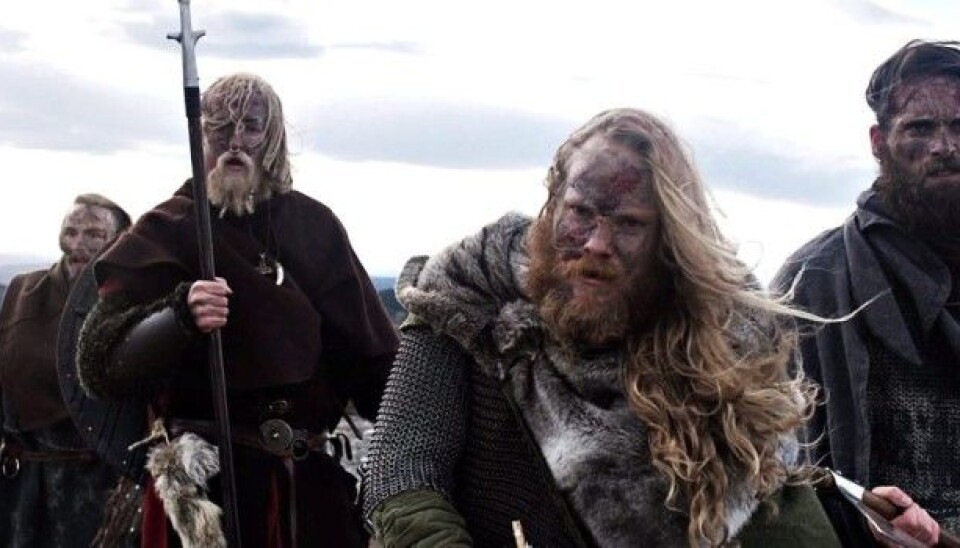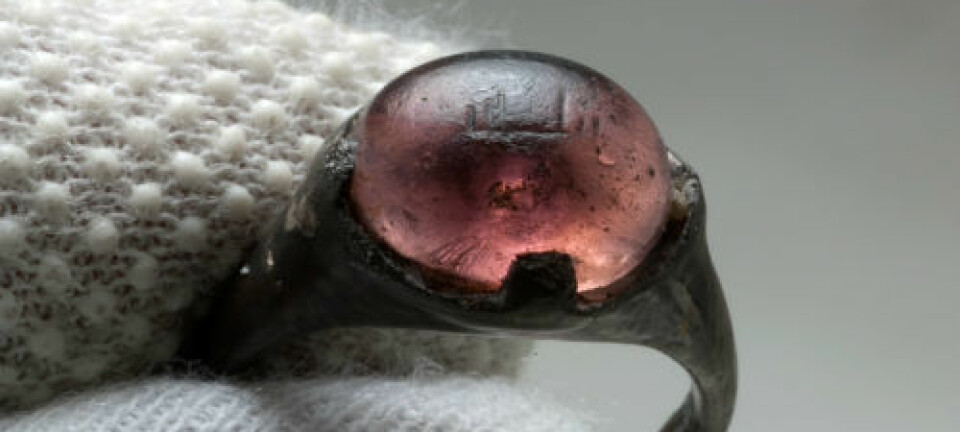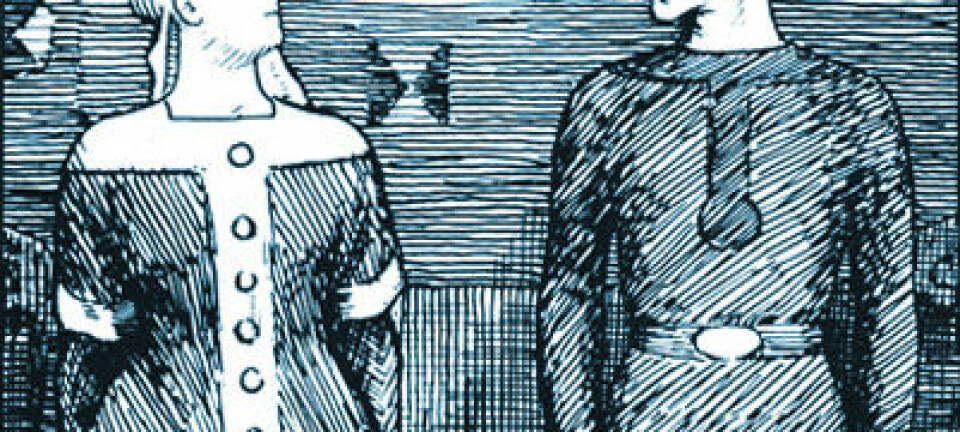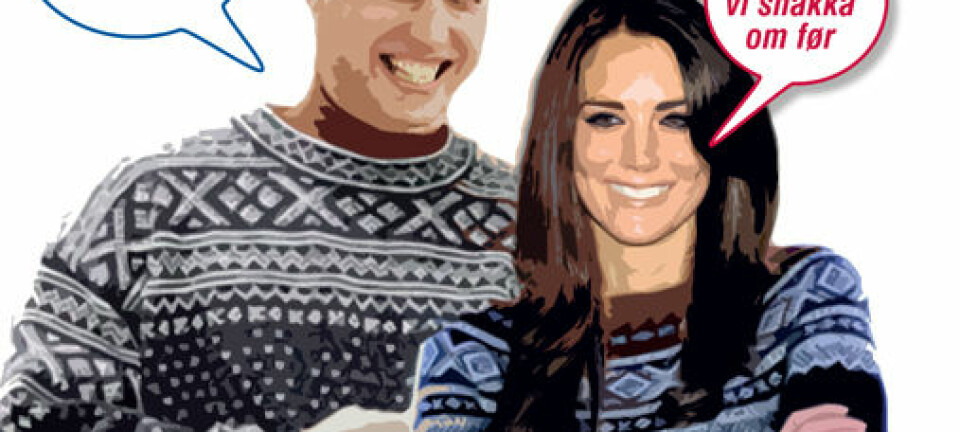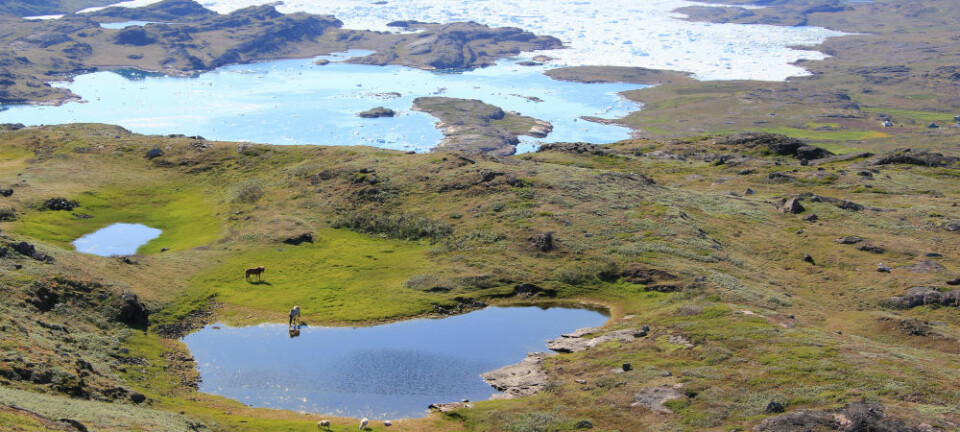An article from Norwegian SciTech News at NTNU
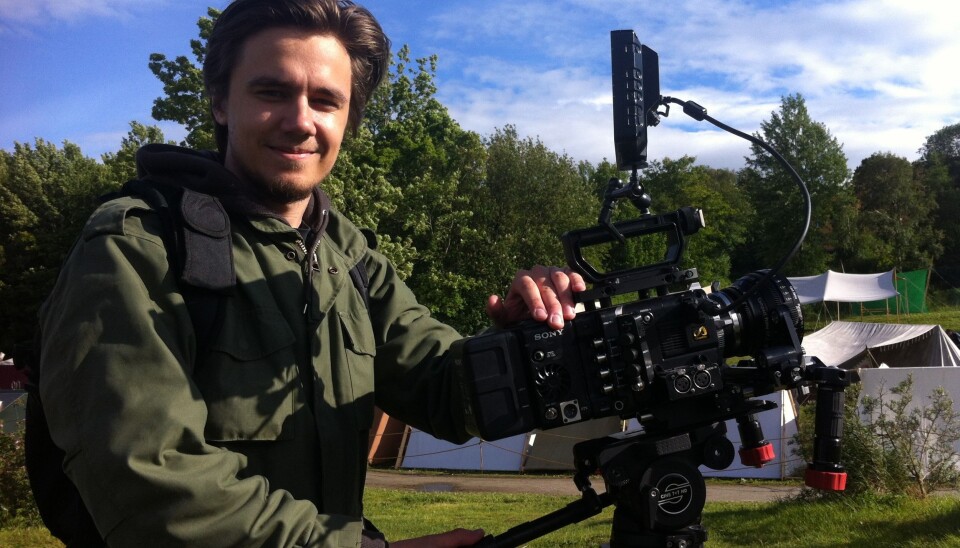
Viking movie will be entirely in Old Norwegian
Liða skaltú ok deyja! — May you suffer and die! Thorough research and hard work has led to one of few films to exclusively use genuine viking language.
Threats and battle cries reverberate and mingle with the clash of sword meeting sword, sword meeting shield and sword meeting body in the Viking battle scene. This dramatic story unfolds in the movie “Trace”, which had its premiere at the Kosmorama International Film Festival in Trondheim in mid-March.
International wave of Viking films
Internationally, Vikings and the Viking Age are all the rage in popular culture, which is reflected in a wave of film and television productions, such as the television series “Vikings” (History Channel), “The Last Kingdom” (BBC) and “Valhalla Rising” (Danish/British production).
Markus Dahlslett’s work now represents the first Norwegian-produced film in this new wave of cinematic Vikings. With limited funding, 70 good assistants, lots of hard work and thorough research, he was ready for the premiere of his short film “Trace” (34 min). The film is part of Dahlslett’s master’s thesis, Et spor av fortiden (“A trace of the past”) in the Department of Art and Media Studies at NTNU.
First Viking film in Old Norwegian

Dahlslett wrote, produced and directed the film. He was committed to creating authenticity in the film and recreating the time period in a credible manner. This led him to having the characters speak Old Norse (or Old Norwegian), which was the language of the Vikings.
“I wanted the character portrayals to be as authentic as possible, not only in terms of props, but also language. I think the spirit of the Viking Age is more believable and alive when actors speak the language that the Vikings actually spoke, and the feeling of going back in time is stronger,” he says and adds, “As far as I know, this is the first Norwegian film that uses Old Norwegian all the way through.”
To achieve this, he knocked on the door of his neighbouring NTNU department, the Department of Language and Literature. Here he met the right man, Jan Ragnar Hagland, a professor of Old Norse and Scandinavian languages. Hagland translated the dialogues into Old Norse, and Dahlslett made recordings that the actors used to rehearse their lines with Old Norse brio.
Credible period picture
One of the challenges of recreating the Viking era in a historically accurate way is the scarcity of written records from this period. We have Snorri Sturlason’s descriptions in his Kings’ Sagas, but these were first recorded a couple of centuries after the Viking Age.
Creating a credible period picture has been important for the young filmmaker. Both in the theoretical part of his thesis and in the production of the film, he takes on this challenge by recreating periods of the past in historical films.
“I think this is an important topic because historical films often affect our view of the past. Historical films move us by their origins and identity with our culture. Historical films and television shows can distort or deepen our knowledge of the past,” says Dahlslett.
He writes in his thesis that production design is one of the most important instruments to capture the spirit of an earlier era on film. Production design includes costume design, prop selection, special effects, movie set construction, location choice, lighting and the use of makeup. Dahlslett discusses how the various elements can be used creatively to create authenticity.
Recreating the past with digital effects
Matte painting was one of the instruments he employed. The filmmaker used this technique as his solution to create a Viking village, for example, since there are no major reconstructed Viking villages in Norway. Conceptual artist Stian Dahlslett contributed by creating the matte painting using Photoshop.
The starting point for the village was a landscape image from Lofoten. Photographs of cabins, cottages, earthen huts and boats from various folk museums in Europe were inserted into the landscape to create a Viking period village. Smoke from chimneys and haze from the ocean were animated in, and through digital zoom movement and film grain, a village emerged as if it had actually been filmed.
“One advantage of using matte paintings is that you also have complete control over lighting, weather conditions and how you want the whole scene to look. You’re not as dependent on everything working flawlessly to the same extent as when you’re on location,” says Dahlslett.
See more examples of Stian Dahlslett’s matte paintings.
Tattooed Vikings
One step that Dahlslett took was to give the Vikings tattoos. Hefty war paint, so to speak. He anticipates that someone will react to the tattoos, since they have not been used very much in Viking films. But he found historical evidence that the Vikings probably used tattoos.
“The Arab chronicler and author Ahmad ibn Fadlan describes Vikings from Scandinavia that he met on his travels in Russia in the year 992, who were tattooed all the way to their fingertips,” Dahlslett says.
“Otherwise we’ve found various remains of tattooed people from early times. They prove that tattooing is a very old European tradition that originated long before the Viking Age. The 5000-year-old Austrian Ötzi, who was found frozen in the Alps, is an example. In Julius Caesar’s The Gallic Wars, Book 5, he describes how the Picts of northern Scotland also had tattoos,” says Dahlslett.
The fight for a better future
The story’s protagonist in the film is Baldur, a Viking explorer who has gathered knowledge from distant countries and empires. He brings his knowledge of seafaring, cartography, medicine, languages and engineering home to Scandinavia to help his people create a better future. Back in his home country he encounters Gorm and his clan, who fear the unknown and want to wipe out the bearers of knowledge. The battle is about survival and hope for a better future.
“Vikings who went to Miklagard and discovered the world learned a lot out of necessity. They were experiencing a different culture, and some of them worked for long periods as mercenaries of Byzantium for Byzantine emperors,” says Dahlslett.
Fight to the death
The battle between Baldur and Gorm gives rise to intense battle scenes. Here Ladehirden—the “charging retinue”—plays an important role, literally. Ladehirden is also an organization in Trondheim for people who engage in stage combat as a hobby and passion.
They conduct training and education in edged-weapons combat, wrestling and martial arts techniques. Members of Ladehirden have roles in the film, and they also instructed the other actors in carrying out the battle scenes realistically.
One of the swords used in the film is a freshly minted, authentic replica of a stately sword found in a Viking grave on the Egge farm in Nord-Trøndelag county. This is where the chieftain Olve held one of the last large Viking “blót”, or sacrificial rites. At Olve’s last midsummer feast, St. Olav took the farm at Egge and ordered Olve killed. A new era, with Christ in the driver’s seat, was brewing.
In “Trace” you can see how things go in the struggle between new and old, between Baldur and Gorm.







